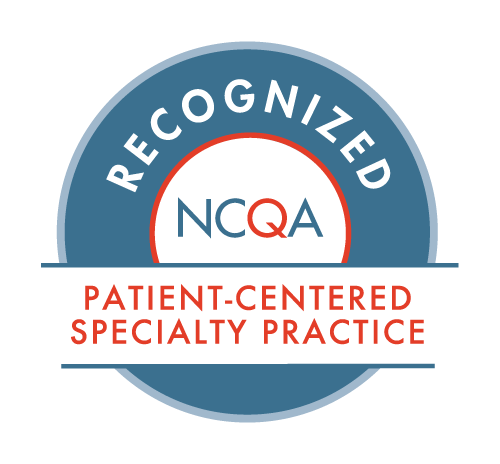Diagnostic Services
What is a diagnostic test?
Diagnostic tests are used to confirm or rule out conditions and diseases. In addition, diagnostic testing aids physicians in creating a treatment plan for patients once they are diagnosed with a condition. Below are some diagnostic tests we commonly order for our patients.
Carotid Doppler Ultrasound
A carotid ultrasound is a non-invasive imaging test that uses sound waves to create pictures of the carotid arteries in the neck. These arteries carry blood from the heart to the brain. The blood flow through these arteries is assessed for potential blockages or narrowing that can lead to a stroke.
Echocardiogram
An echocardiogram is a non-invasive ultrasound procedure performed by a cardiac sonographer to show the anatomical structures of the heart. Also known as an echo, this test uses sound waves to create pictures of your heart. The size, shape, structure, function, and any abnormalities of the heart are assessed through this test.
Holter Monitor
A Holter Monitor records the heart’s rhythm during daily activities. This monitor is portable and continuously monitors the heart’s electrical activity during a 24 hour or 48 hour period of time. The Holter Monitor can identify any abnormal heart rhythms.
Ambulatory Blood Pressure Monitoring (ABPM)
Ambulatory blood pressure monitoring involves measuring blood pressures at regular intervals while a patient undertakes normal daily activities over a 24 hour period of time. These readings are used to determine if a patient has hypertension and the severity of it.
“I got an appointment the day after an abnormal EKG- and it was a Saturday! The receptionist was great. My nurse, Renee was so kind. Dr. Bialy was so kind explaining everything to me. It was a very stressful time and they could not have treated me any better. The following Friday I had an Echocardiogram- it was late in the day, but Shannon said not to worry (they would have admitted me if concerning). She called me as soon as they got the results on Monday, because she ,”knew I was so worried.” She remembered and that’s so comforting! -Lacey M.
Cardiac Event Monitor
A cardiac event monitor is a non-invasive, portable method for diagnosing a cardiac arrhythmia. This monitor is portable and determines if a potential abnormal heart rhythm is the cause of a particular symptomatic event by recording a patient’s heart rate and rhythm during a period of time.
Outpatient Telemetry Monitor (MCOT)
An Outpatient Telemetry Monitor (MCOT) is a mobile device that transmits heart information such as heart rates and rhythms from various remote locations in real time. It can identify a potential heart arrhythmia in a timely manner.
Exercise Stress Test
An exercise stress test is a non-invasive treadmill test which is used to assess how well the heart responds to extra demand. The heart requires more oxygen during exercise so the heart must pump more blood. This test can reveal if the blood supply is reduced in certain arteries in the heart.
Nuclear Stress Test
This is an imaging test that uses radioactive dye to show the distribution of blood flow to the heart at rest and also during exercise or during the administration of a particular medication. A nuclear stress test is performed to ensure that the heart muscle is getting the blood supply it needs and determine the risk of a heart attack or other cardiac event.
Coronary Artery Calcium Test (CAC)
A coronary artery calcium test (CAC) is simply a CAT scan that measures how much calcium build-up you have in the walls of the arteries in your heart. Typically, calcium deposits itself in the artery walls in cholesterol plaque, which is revealed in the images produced by the CAC test. Knowing if you have calcium in your arteries is an important part of your cardiovascular health. Not only is it an early identifier of heart health risks, but it can also effectively tell you how you should be treated.
Computerized Tomography Coronary Angiogram
A computerized tomography coronary angiogram (CT coronary angiogram) is a noninvasive method for detecting blockages in the coronary arteries. By producing high-resolution images of the moving heart and arteries, plaque or calcium deposits can be visualized in the arterial walls. Patients undergoing this procedure receive a contrast material by way of intravenous (IV) injection to ensure a clear image of the heart blood vessels is achieved.
Cardiac Magnetic Resonance Imaging (MRI)
An MRI is a noninvasive test that uses a powerful magnetic field, radio waves and a computer to produce high-resolution pictures of heart structures in order to evaluate the anatomy and function of the heart.
Aorta Iliac Duplex Ultrasound
An Aorta Iliac Duplex Ultrasound is a non-invasive imaging test used to visualize and measure the major artery (aorta) in the abdominal cavity. This test uses sound waves to produce pictures of the aorta, which is the largest and main artery in the body, and all of the main arteries that are attached to the aorta. This test can show if there are plaque deposits in the aorta or potentially aneurysms.
Peripheral Ultrasound
A peripheral ultrasound is an imaging test used to visualize and measure the blood flow in the blood vessels from the pelvis to the ankles. This test uses sound waves to evaluate the veins or arteries in either the upper or lower extremities to assess for blockages or clots.
Schedule A Consultation
To learn more about the diagnostic services we offer at Hunterdon Cardiovascular Associates schedule a consultation by calling (908)-788-1710. Our providers happily serve patients from Flemington, Clinton, Bridgewater, and surrounding areas in New Jersey.



